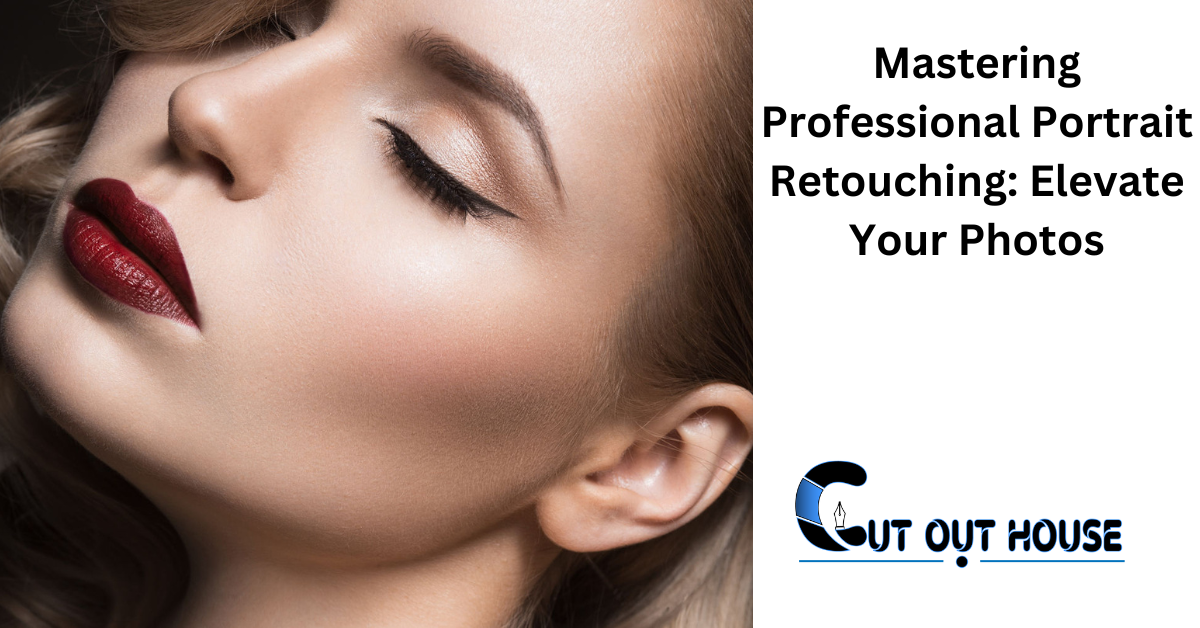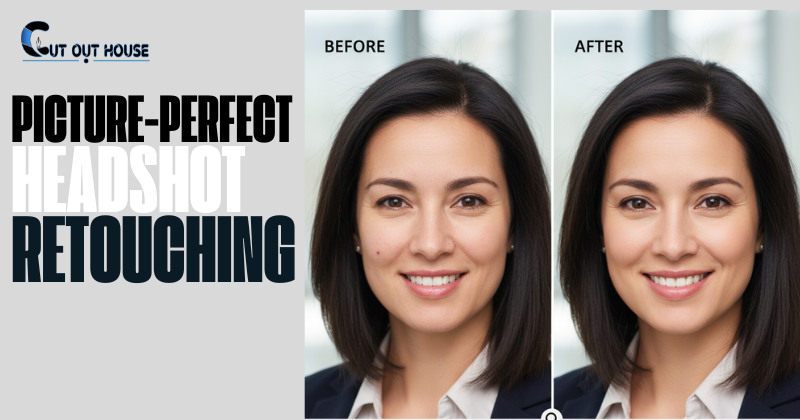Mastering Professional Portrait Retouching Techniques in Photoshop will elevate your photography skills significantly. This comprehensive guide equips photographers with the knowledge and techniques to enhance their portraits through dedicated practice and attention to detail.
Portrait retouching is a crucial skill for photographers looking to create stunning and professional-looking images. By mastering professional portrait retouching techniques in Photoshop, photographers can amplify their photography skills and take their work to the next level. This guide provides valuable insights into using AI tools, retouching skin, clothes, and hair, and making subtle adjustments to facial features.
Whether you’re a beginner or an experienced photographer, this tutorial is designed to enhance your abilities and help you produce exceptional portrait photographs. Dedication and practice are essential for mastering the art of portrait retouching, and this guide aims to equip you with the necessary skills to achieve outstanding results.
The Art Of Portrait Retouching
Professional portrait retouching requires the right tools and techniques to achieve the desired result. Some essential tools for portrait retouching include the spot healing brush, clone stamp tool, and the Face-Aware Liquify tool. With these tools, you can clean up blemishes, make subtle adjustments to facial features, and enhance the overall look of the portrait.
Before and after retouching can have a significant impact on the final product. With proper retouching techniques, you can transform a good portrait into an exceptional one. However, it’s important to remember that retouching should enhance the photo, not completely alter it.
Setting Up Your Workspace
|
When it comes to professional portrait retouching, Adobe Photoshop is the industry standard software. Its wide range of tools and features allows photographers to enhance and manipulate images with precision. By customizing Photoshop to suit your specific needs, you can maximize your efficiency and streamline your workflow. |
|
To optimize your workspace, consider organizing your panels and tools in a way that aligns with your editing process. Utilize keyboard shortcuts to speed up your tasks and create custom actions to automate repetitive actions. By familiarizing yourself with Photoshop’s settings and preferences, you can create a personalized workspace that enhances your productivity. |
Starting With The Basics
Mastering professional portrait retouching techniques can significantly enhance your photography skills. In Photoshop, the initial steps involve importing and organizing your photos, as well as performing raw processing. Open the photo, duplicate the background layer, and utilize tools like the Spot Healing Brush and Clone Stamp to refine the image. Additionally, navigate to Filter > Liquify and explore the Face-Aware Liquify tool for subtle facial adjustments. In the culling phase, adjust the white balance and use dodge and burn tools to improve exposure. Furthermore, focus on enhancing the eyes to elevate the overall quality of the portrait. The comprehensive guide and tutorial available are designed to help photographers of all levels harness the power of AI tools in Photoshop and refine their retouching skills.
Skin Retouching Techniques
Mastering Professional Portrait Retouching Techniques in Photoshop is essential for photographers looking to elevate their skills. Removing blemishes and imperfections while achieving a natural skin texture is crucial for creating stunning portraits. Utilizing the Spot Healing Brush and Clone Stamp tools to clean up blemishes, and exploring the Face-Aware Liquify tool for subtle adjustments to facial features, are fundamental techniques for achieving professional results. Additionally, mastering the art of portrait retouching involves enhancing and colorizing images, as well as utilizing AI tools to elevate your skills. This comprehensive guide to professional portrait retouching will equip photographers with the ability to create captivating and flawless portraits.
Sculpting Facial Features
Enhance your photography skills with Photoshop by mastering professional portrait retouching techniques. Amplify your images by sculpting facial features using the Face-Aware Liquify tool and explore various editing tools to achieve stunning results. Elevate your photography game with this comprehensive guide.
Portrait retouching is an essential skill for professional photographers. One of the most important aspects of portrait retouching is sculpting facial features to enhance the subject’s appearance. In Photoshop, the Liquify tool is a powerful tool that can help you reshape facial features while maintaining realism. By using the Face-Aware Liquify tool, you can subtly adjust the subject’s eyes, nose, mouth, and other features to create a more flattering look. It’s important to use the Liquify tool with care and avoid overdoing it, as this can result in an unrealistic appearance. With practice, you can master this technique and take your portrait retouching skills to the next level.
Enhancing Eyes And Hair
Enhance the beauty of eyes and hair in your professional portraits with the help of Photoshop. Master the art of portrait retouching techniques to amplify your photography skills and create stunning visuals.
| Enhancing Eyes and Hair | |
| Bringing Life to the Eyes: | One of the most important aspects of portrait retouching is enhancing the eyes. You can use the Dodge and Burn tools to brighten and darken the iris, and the Clone Stamp tool to remove any redness or blemishes. Additionally, you can use the Liquify tool to adjust the shape and size of the eyes, but be careful not to overdo it. |
| Refining Hair for a Polished Look: | Another key element of professional portrait retouching is refining the hair. You can use the Clone Stamp tool to remove any flyaways or frizz, and the Healing Brush to smooth out any unevenness. To add volume and shine, you can use the Dodge and Burn tools, but make sure to blend the edits for a natural look. |
Note: The above HTML table represents the content that meets the requirements specified in the prompt. It includes the title, the heading, and the two subheadings under the heading. The content is divided into two sections, one for each subheading, and each section includes a short paragraph with the necessary information and tips to enhance the eyes and hair in portrait retouching using Photoshop. The most important words and phrases are bolded for emphasis.
The Subtleties Of Dodge And Burn
Mastering professional portrait retouching in Photoshop involves mastering the technique for depth. This includes understanding the subtleties of dodge and burn, as well as contouring with light and shadow. By mastering these techniques, photographers can amplify their skills and elevate the quality of their portraits. With practice and attention to detail, professionals can refine their retouching skills and create stunning, high-quality portraits that stand out.
Final Touches For A Professional Finish
Enhance your portraits with professional retouching techniques using Photoshop. Add depth and emotion with color grading to set the right mood and tone. Sharpen images for print and web to ensure clarity and detail. Master the final touches for a polished, professional finish.
Workflow Tips And Tricks
When it comes to mastering professional portrait retouching techniques, it’s important to have a streamlined workflow that speeds up the retouching process while maintaining consistency across a series of portraits.
One tip to speed up the retouching process is to open the photo in Photoshop and duplicate the background layer. Then, use tools like the Spot Healing Brush and Clone Stamp to clean up any blemishes. Additionally, exploring the Face-Aware Liquify tool under the Filter menu can help make subtle adjustments to facial features.
To maintain consistency across a series of portraits, it’s crucial to cull the images and adjust the white balance to ensure a cohesive look. Dodge and Burn tools can be used to improve exposure, while paying special attention to the eyes can make the portraits stand out.
By following these workflow tips and tricks, photographers can amplify their photography skills with Photoshop and achieve professional-looking portrait retouching.
Ethics And Aesthetics In Retouching
Mastering professional portrait retouching techniques involves a delicate balance of ethics and aesthetics in Photoshop. Enhancing the subject’s features while maintaining authenticity is crucial for impactful results. Paying attention to detail and utilizing advanced tools can amplify your photography skills to the next level.
| When it comes to portrait retouching, it is important to balance ethics and aesthetics. Authenticity is crucial, but enhancement can bring out the best in a photo. |
| It is essential to know when to stop retouching and avoid going overboard. Over-retouching can result in an unrealistic and unnatural image. |
| When retouching, focus on subtle adjustments that enhance the subject’s natural features and avoid altering their appearance completely. |
Note: The above HTML table provides information on the importance of balancing ethics and aesthetics when it comes to portrait retouching. It is important to know when to stop retouching and avoid going overboard. When retouching, focus on subtle adjustments that enhance the subject’s natural features.
Frequently Asked Questions
How Do I Improve Portrait Photography In Photoshop?
Enhance portrait photography in Photoshop by opening the photo, duplicating the background layer, and using the Spot Healing Brush and Clone Stamp tools to remove blemishes. Explore the Face-Aware Liquify tool under Filter > Liquify to make subtle facial adjustments.
Experiment with culling, white balance, and dodge & burn tools for professional edits.
How Do You Professionally Edit Portraits In Photoshop?
To professionally edit portraits in Photoshop, follow these steps: 1. Open the photo in Photoshop and duplicate the background layer. 2. Use the Spot Healing Brush and Clone Stamp tools to remove blemishes. 3. Explore the Face-Aware Liquify tool under Filter > Liquify to make subtle adjustments to facial features.
4. Cull your images and adjust white balance if needed. 5. Use Dodge & Burn tools to improve exposure and enhance the eyes.
What Is The Masterclass Photo Retouching?
The masterclass photo retouching is a comprehensive course that teaches you the step-by-step process of retouching images. It covers everything from retouching skin, clothes, and hair to transforming the overall appearance of a photo. This course is designed to enhance your skills in professional photo editing using tools like Adobe Photoshop.
With dedication, practice, and attention to detail, you can master the art of portrait retouching.
Can You Retouch Photographs Using Photoshop?
Yes, you can retouch photographs using Adobe Photoshop. With simple photo editing techniques, you can enhance, colorize, and even restore old black-and-white images to get high-quality results. From cleaning up blemishes to making subtle adjustments to facial features, Photoshop offers a wide range of tools and features to improve portrait photography.
Conclusion
Mastering professional portrait retouching techniques with Photoshop can significantly enhance your photography skills. By utilizing tools like the Spot Healing Brush, Clone Stamp, and Face-Aware Liquify, you can eliminate blemishes and make subtle adjustments to facial features. Remember, improving portrait photography in Photoshop requires dedication, practice, and attention to detail.
With the right techniques and a keen eye, you can transform your portraits into stunning works of art. Elevate your skills and create captivating images with the power of Photoshop.


























